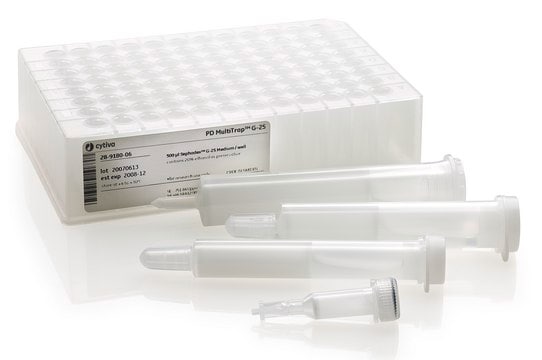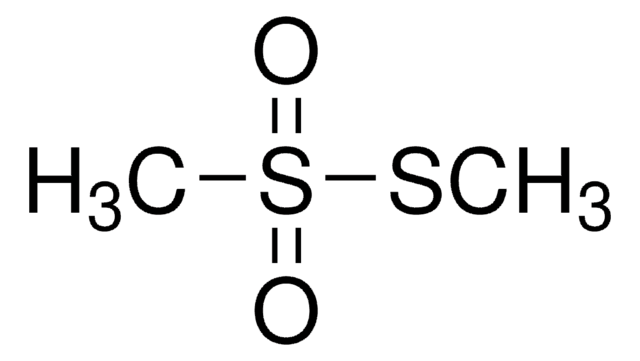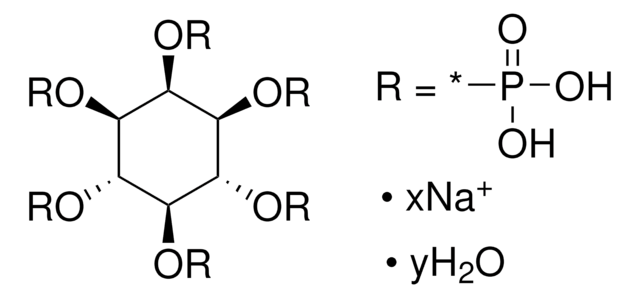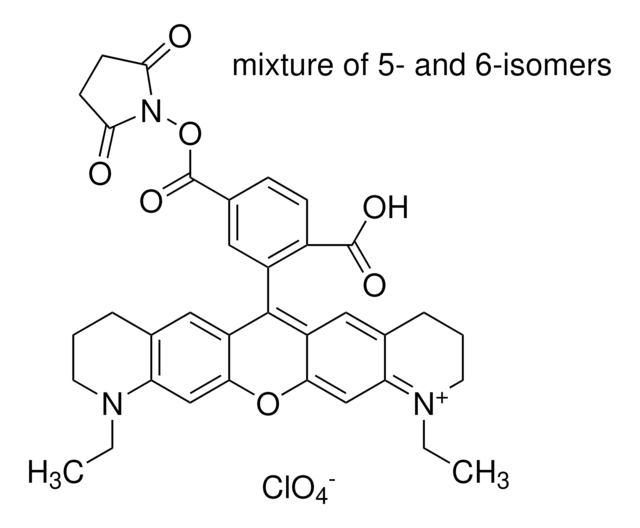Kluczowe dokumenty
A1935
Photobiotin acetate salt
For labeling DNA probes for hybridizations
Synonim(y):
Biotin {3-[3-(4-azido-2-nitroanilino)-N-methylpropylamino]propylamide} acetate salt, N-(4-Azido-2-nitrophenyl)-N′-(3-biotinylaminopropyl)-N′-methyl-1,3-propanediamine acetate salt
About This Item
Polecane produkty
klasa czystości
for molecular biology
Poziom jakości
Próba
≥95%
Formularz
film or powder
rozpuszczalność
H2O: 10 mg/mL (Stable for at least 5 months if kept frozen and protected from light.)
temp. przechowywania
−20°C
ciąg SMILES
CC(O)=O.CN(CCCNC(=O)CCCC[C@@H]1SCC2NC(=O)NC12)CCCNc3ccc(cc3[N+]([O-])=O)N=[N+]=[N-]
InChI
1S/C23H35N9O4S.C2H4O2/c1-31(12-4-10-25-17-9-8-16(29-30-24)14-19(17)32(35)36)13-5-11-26-21(33)7-3-2-6-20-22-18(15-37-20)27-23(34)28-22;1-2(3)4/h8-9,14,18,20,22,25H,2-7,10-13,15H2,1H3,(H,26,33)(H2,27,28,34);1H3,(H,3,4)/t18-,20-,22-;/m0./s1
Klucz InChI
FFBLNTOMOSLSQM-AYEYRVMASA-N
Szukasz podobnych produktów? Odwiedź Przewodnik dotyczący porównywania produktów
Opis ogólny
Zastosowanie
Działania biochem./fizjol.
Przestroga
produkt powiązany
Kod klasy składowania
11 - Combustible Solids
Klasa zagrożenia wodnego (WGK)
WGK 3
Temperatura zapłonu (°F)
Not applicable
Temperatura zapłonu (°C)
Not applicable
Środki ochrony indywidualnej
Eyeshields, Gloves, type N95 (US)
Wybierz jedną z najnowszych wersji:
Masz już ten produkt?
Dokumenty związane z niedawno zakupionymi produktami zostały zamieszczone w Bibliotece dokumentów.
Nasz zespół naukowców ma doświadczenie we wszystkich obszarach badań, w tym w naukach przyrodniczych, materiałoznawstwie, syntezie chemicznej, chromatografii, analityce i wielu innych dziedzinach.
Skontaktuj się z zespołem ds. pomocy technicznej







